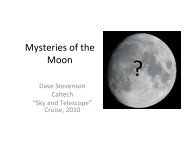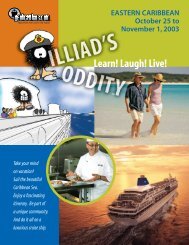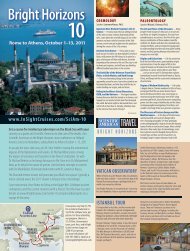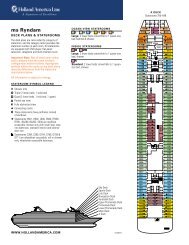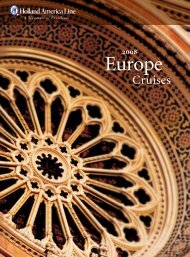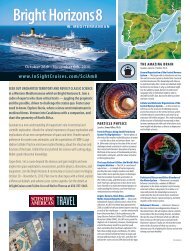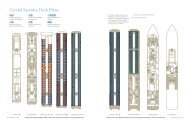Panama Canal brochure - Insight Cruises
Panama Canal brochure - Insight Cruises
Panama Canal brochure - Insight Cruises
Create successful ePaper yourself
Turn your PDF publications into a flip-book with our unique Google optimized e-Paper software.
Bridge Between Worlds<br />
Construction event of the century<br />
Even before its opening, reporters, photojournalists, adventurers<br />
and the curious came from around the world to witness this colossal<br />
undertaking. What they found was almost beyond description: Locks<br />
with walls 1,000-feet long, gates seven-feet thick, the world’s largest<br />
manmade lake — “too big for photo” wired one photographer.<br />
Teddy Roosevelt Admirers poured into the locks for a close-up look. <strong>Panama</strong> <strong>Canal</strong><br />
<strong>Panama</strong> <strong>Canal</strong> History<br />
Early efforts<br />
As early as the days of Columbus, man was set on finding a sea-level<br />
shortcut through the American landmass. But not until Frenchman<br />
Ferdinand de Lesseps, fresh from his triumph of building the Suez <strong>Canal</strong><br />
in 1879, did anyone make a serious attempt. Long story short: The project<br />
was poorly managed, underfinanced, and in 1889 the French company<br />
went bankrupt. Clearly, an engineering project of this magnitude was too<br />
much for a private company. This was a job for a nation.<br />
Enter the United States<br />
In 1902 President Theodore Roosevelt revived the dream. The United States<br />
purchased the French holdings in <strong>Panama</strong> for a record $40 million.<br />
Col. George Washington Goethals of the U.S. Army Corps of Engineers<br />
was put in charge. And the construction of the <strong>Canal</strong> proceeded with<br />
unprecedented speed.<br />
Against all odds<br />
Despite malaria, yellow fever and 130˚f days, the work went on. One foot at<br />
a time across fifty miles of jungle, laborers dug an enormous trench, dammed<br />
rivers and constructed six immense locks. On August 15, 1914, the steamer<br />
ss Ancon made the 50-mile inaugural transit in nine hours and 40 minutes<br />
— shaving some 9,000 miles from the usual trip around Cape Horn.<br />
A flood of water<br />
To provide the perpetual water supply<br />
necessary to operate the locks, an<br />
earthen dam was built across the Chagres<br />
River, causing flooding and creating<br />
Gatún Lake (at the time, the world’s<br />
largest artificial lake). In the process,<br />
hilltops became islands, as in the case<br />
of Barro Colorado Island, a lush living<br />
laboratory for the Smithsonian Tropical<br />
Research Institute.<br />
On time, under budget<br />
In 1913, a full year ahead of schedule and<br />
under budget by almost $23 million,<br />
the <strong>Panama</strong> <strong>Canal</strong> was completed. Still,<br />
at a final cost of $375 million in other<br />
materials, the price of the <strong>Canal</strong> was<br />
five times higher than the total cost<br />
of the Louisiana Territories, Florida,<br />
California, New Mexico, Alaska and the<br />
Philippines, combined.<br />
Good to go<br />
The first vessel, the tugboat Gatún,<br />
tested the locks on September 16, 1913,<br />
and the <strong>Canal</strong> was officially opened on<br />
August 15, 1914.<br />
OPPOSITE<br />
Gatún Locks in the course<br />
of construction.<br />
14 e-<strong>brochure</strong>s available online www.hollandamerica.com 15



